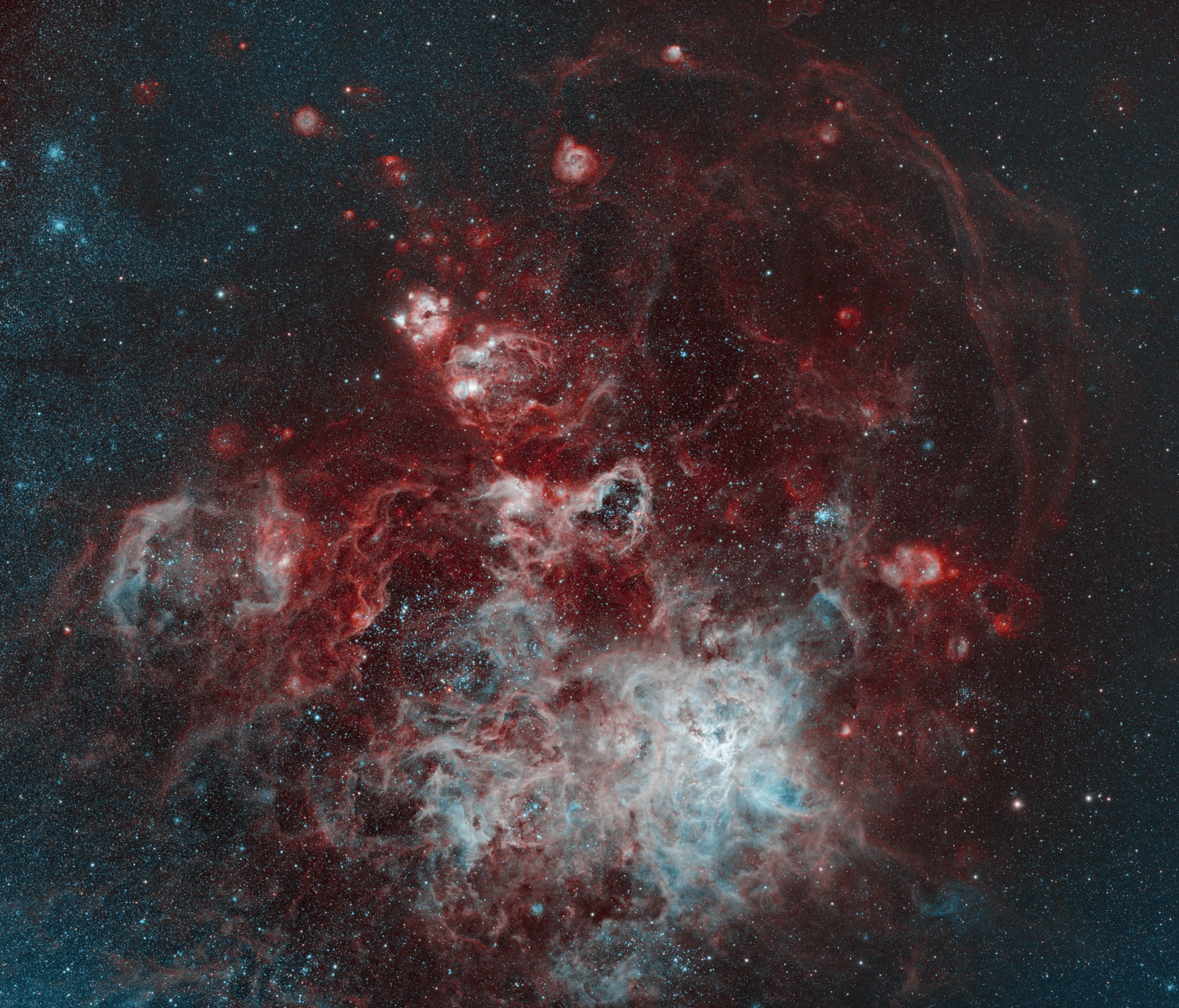"Tarantula" nebula (HOO)-Large Magellanic Cloud Galaxy
 Click here or on the image for full size...WARNING: Heavy File!!!!
Click here or on the image for full size...WARNING: Heavy File!!!!
As happens with all the clouds, all of us have freedom to exercise our imagination: here many people see a spider...
At approximately 170000 light-years, in the austral constellation Dorado, lays the "Tarantula Nebula" (NGC2070 or 30 Doradus).
Ubicated into the Large Magellanic Cloud (one of the galaxies of the Local Group, probably a satellite of our own galaxy), this is the biggest emission nebula known.
This photography was made in the city of Buenos Aires, Argentina, in different sessions during several nights of November 2020, totalizing 30 hours of exposition time.
Equipment used: Sky Watcher Esprit 100 ED APO, ZWO ASI 1600 (temperature -20°C), Baader Hα 3.5 nm filter, Astronomik OIII 6 nm filter, NEQ6 mount. Homemade electronic focuser and anti-dew devices.
Here, there is a RGB color photography of this nebula, taken from "almost-rural" skies in San Antonio de Areco, Buenos Aires province.
Technical Data
| Acquisition site | Buenos Aires City, Argentina |
| Acquisition dates | From November 11 to 26, 2020 (11 sessions) |
| Instrument | Refractor SkyWatcher Esprit 100 ED APO. |
| Mount | Sky-Watcher NEQ6, managed by EQmod |
| Guide | Off-Axis, with Lodestar camera |
| Camera | ZWO ASI 1600 |
| Camera sensor temperature | -20°C |
| Filters | •Baader Hα (3.5 nm) •Astronomik OIII (6nm) |
| Integration | 360 x 5 minutes subframes Total integration time: 30 hs (15 hs/filter) |
| Calibration | 36 flats, 80 darks, 100 darkflats. |
| Resolution | 0.7 arcsec/pixel 550 mm focal lenght, 3.8 µm x 3.8 µm pixels, using drizzle technique |
| Native size | 4656 x 3520 pixels |
| FOV | 1° 31' x 1° 18' |
| Image center coordinates | • RA: 5h 40m • Dec: -69° 26' • Rotation: 136° |
| Acquisition | Maxim DL |
| Process | PixInsight 1.8 |